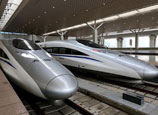
Ford's original vision
Mulally's "One Ford" plan helped avert bankruptcy in 2009, and the company is drawing from the same playbook to restructure its European operations, which may lose at least US$3 billion over the next two years.
Under "One Ford," overall product development became two-thirds more efficient from 2006 to 2012, Ford said.
Mulally's insistence on developing global cars harkens back to Henry Ford's Model T, which was exported around the world in 1913. The 1915 model sold for just more than US$700 in China, at a time when rivals were charging around US$2,000.
But Ford's fortunes in the country waned after the automaker bypassed an offer from modern China's founder, Sun Yat-sen, to help the country build an indigenous auto industry in 1924.
Nearly a century later, Ford's brand identity is one obstacle in China, said Shaun Rein, author of "The End of Cheap China" and a corporate consultant in the country. The high cost of Ford's lineup is another hurdle.
The Fiesta, Ford's cheapest model, starts at US$12,300. About one-fifth of China vehicle sales this year were priced less than US$12,000, according to JD Power and Associates.
Next year, Ford will launch the Fiesta-based Ecosport compact, which will be the lowest-priced SUV in its portfolio.
Ford also plans to introduce "several low-cost models," including the "Value B" compact, by 2015, said Dave Schoch, who will become president of Ford's Asia-Pacific operations on Saturday.
"We recognize that we've played at this higher end and we have a huge opportunity to expand our segment coverage in the market," he said in August.















 Record number of hopefuls sit annual civil service exam
Record number of hopefuls sit annual civil service exam


![]()
